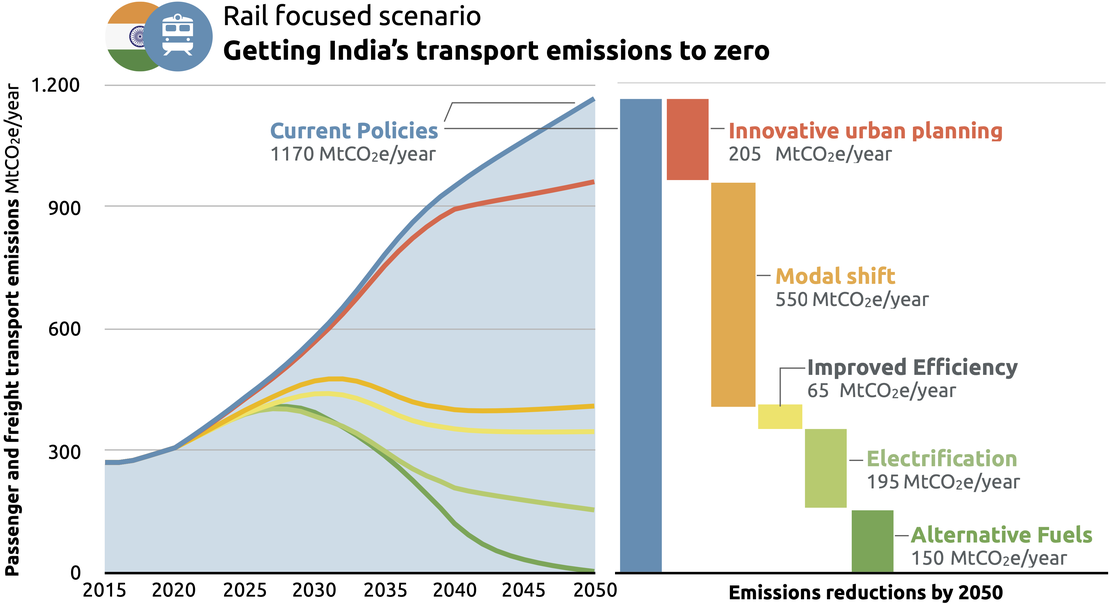The Climate Action Tracker explored a new approach to understanding opportunities for sectoral decarbonisation, using the example of the transport sector in India.
To hold global average temperature increase to 1.5°C, global CO2 emissions need to reach net-zero by 2050, with rapid decarbonisation in all sectors.
Global transport emissions have continued to steadily increase, with transport emissions accounting for 24 percent of direct CO2 emissions from fuel combustion.
In this study we look specifically at how India can decarbonise its transport sector, its fastest-growing source of carbon emissions. Its transport sector is responsible for 13.5 per cent of the country’s energy-related CO2 emissions, with road transport accounting for 90 percent of the sector’s final energy consumption.
This analysis explores Paris Agreement-aligned emissions reduction scenarios to zero emissions by 2050 for the Indian transport sector. It acknowledges that there is no single best solution to decarbonising the transport sector. Instead, it explores two stylised pathways representing two paradigm shifts that could lead to a decarbonisation of the sector, neither of them exclusive. One scenario focuses on scaling up of rail transport while the other primarily builds around electrification of road transport.
The report examines how policy driven interventions such as innovative urban planning, the electrification and improved efficiency of transport systems, a modal shift towards public transport and alternative fuels can all play a role in drastically reducing emissions in line with the Paris Agreement. Each policy area is represented as a wedge in the graphs below, showing its mitigation potential as compared to a Current Policies scenario. The order does not represent a prioritisation of action, but simply follows the underlying model logic.
The scenarios explored can only be reached with ambitious policy packages, and domestic or international financing. This report does not explore the issue of whether - or how much - international financial support would be required to support India’s transition to these highest plausible ambition scenarios in its transport sector. Rather, we identify policy areas and then review existing transport policies from a range of countries that achieve - or at least initiate - the necessary sectoral transformation in the various segments of the transport sector.







